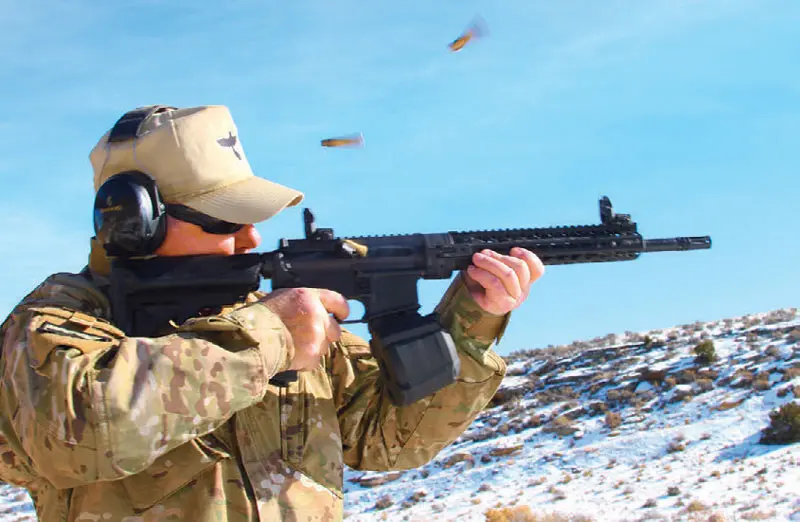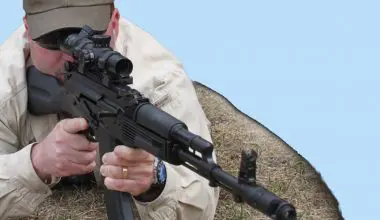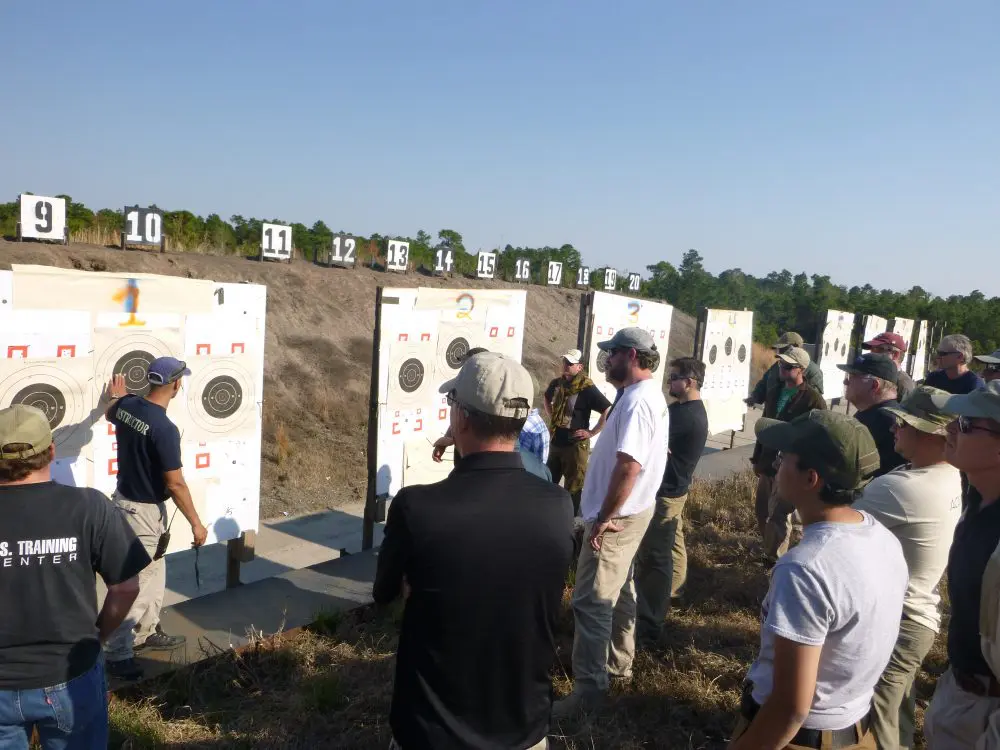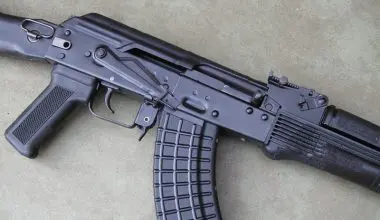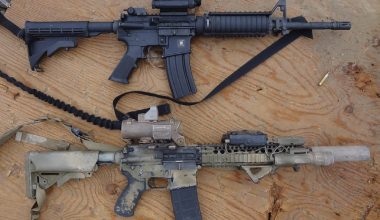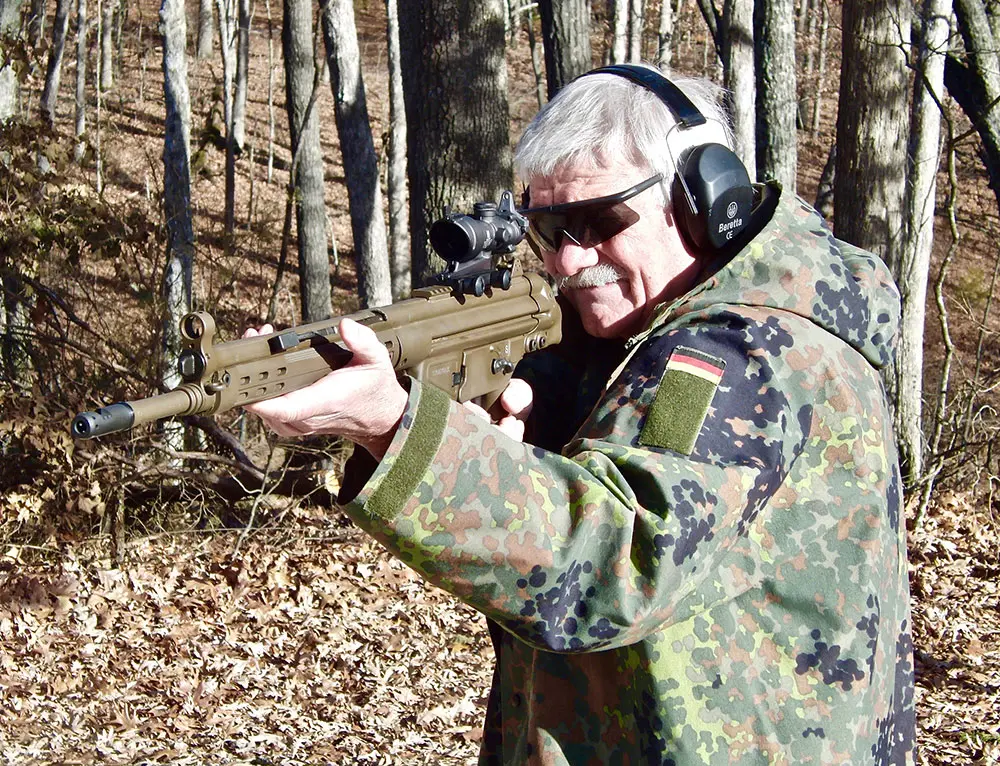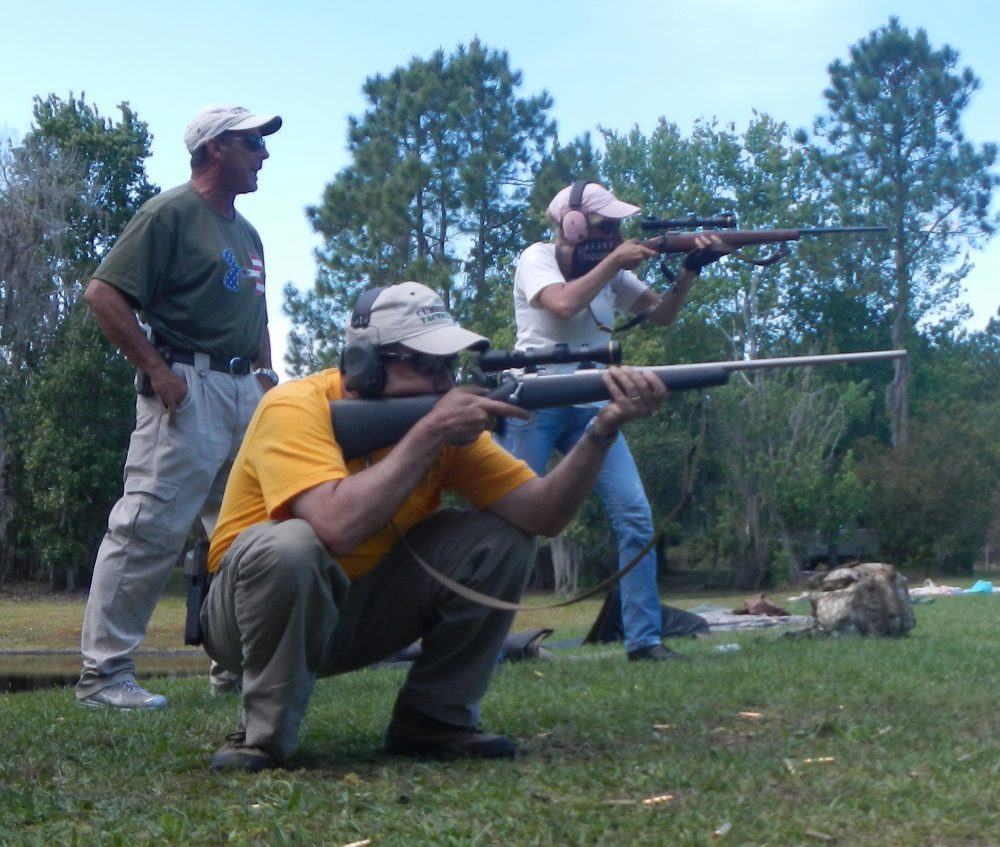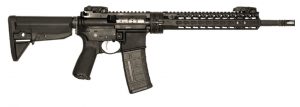
The search for the “perfect” quick-change AR15 barrel seemingly never ends. Even with the simplicity of pushing out two receiver pins to change upper groups, the quest for something better has continued.
A dozen or so contemporary AR-type rifles offer barrels that are changeable in the field. Some of these are faster than others, but is faster always better? For example, the Steyr AUG probably has the fastest system out there, but the AUG is a bullpup rifle, and for those who don’t prefer a bullpup, its barrel-change speed is secondary.
Table of Contents
MISSION REQUIREMENTS DICTATE THE RIFLE
There is also the question of repeatable accuracy. If minute-of-angle accuracy is the major consideration with a change-able barrel, then a pre-sighted-in optic will be mandatory with the replaced barrel.
Mission requirements always dictate those of the rifle and can run from a short-barreled rifle (SBR) to a three-barrel, three-caliber contraption with three different types of ammunition and three magazines with plenty of pain relief all in one giant case.
But here we are dealing with .223, .300 Blackout, 6.8x43mm SPC, 7.62x39mm, and the like that will fit into an AR-15 envelope.
Although not necessarily in order, the requirements of a quick-change barrel rifle/carbine include reliability, accuracy, effectiveness, and simplicity. Then we might want to add repeatability, ease of concealment, weight, suppressor capable and, let us not forget, speed of deployment.
MISSIONS
Utilitarian values of a quick-change barrel can run from backpacking to truck guns to covert needs where an SBR is preferred, and an SBR is limited to law enforcement and BATF&E registration in states allowing such firearms. The same goes for sound suppressors.
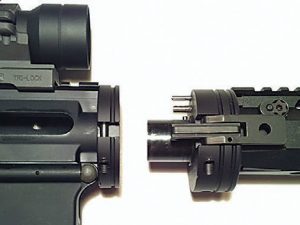
Backpackers often select a 16-inch barrel takedown rifle with magazines adhering to hunting regulations. Depending on location, truck guns carried by ranchers might have similar limitations.
Where LE is concerned, the deployment of rifles and especially SBRs is limited to departmental regulations and proper training. Takedown rifles with shorter barrels can be carried in a patrol car with a long-range heavier barrel or upper receiver group stored in the trunk with appropriate optical sight and other accessories. In other conditions, a takedown SBR can be stowed in a very small space or a carrying case with a label that does not telegraph “gun” to passersby.
THE QRB AND HOW IT WORKS
As mentioned above, quick-change and takedown rifles are nothing new, with a number of them from which to choose. Now there is another: the Quick-change Rifle Barrel, from Cry Havoc Tactical (CHT) of Florida.
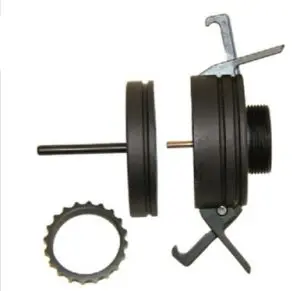
Available just as the QRB system itself, it can also be had as a complete upper component to fit any mil-spec AR-15 or M16 lower receiver using parts of the custom- er’s choosing or fitted to the customer’s existing mil-spec barrel/receiver group. Here’s how it works.
Using two-round 6061-T6 hard-coat alloy plates, the rear plate is called the “receiver plate assembly” and is secured to the upper receiver by the special QRB nut that CHT calls the barrel nut. Similar to an AR-15 barrel nut, this one is shorter with the toothed flange thinner.
Since this nut has nothing to do with securing the barrel, I’ll refer to it as simply the QRB nut. It is secured with no more than 40-inch-pounds and is slightly recessed to mate with the barrel flange when assembled. The front of the threaded receiver ring is recessed .025 inch.
When in place, the QRB nut secures a round steel bushing containing the special recessed rear portion of the gas tube, thus becoming the QRB gas-tube extension. The front of the bushing houses (by my measurements) .464 inch of the QRB gas tube, which is shortened from a standard tube.
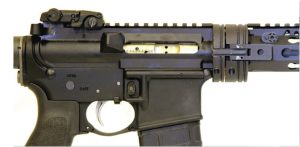
This tube protrudes .464 inch from the front plate, which is called the barrel plate assembly. The QRB gas tube enters the larger section of the QRB gas-tube extension and abuts the gas tube when assembled.
Above the gas tube bushing is a hole in the receiver plate assembly to accept a hardened steel locating pin .125 inch in diameter. This pin is fixed in the forward section of the barrel plate assembly above the gas tube, resulting in both the pin and the tube locking the plate from rotational movement.
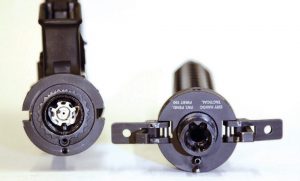
The front portion of the barrel plate assembly contains a duplicate of the threaded section of an AR-15 upper receiver and onto this is screwed the barrel nut used with the handguard selected.
For example, if a BCM KMR hand-guard is used (as shown), the barrel is first inserted through the rear of the barrel plate assembly as far as it will go, with the locating pin in the barrel extension in the recess. The barrel nut is then tightly screwed onto the forward section of the barrel plate assembly to no more than 40-inch-pounds.
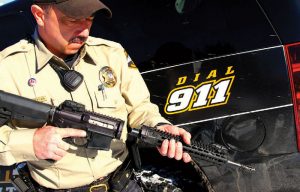
When the barrel is secured to the barrel plate, the gas block and special gas tube are assembled. Then the handguard is assembled per its instructions. The BCM KMR handguard uses two opposing bolts, but these are left loose until the gas tube and two top rails are aligned.
A master locking bolt in the bottom of the barrel plate is then tightened, followed by tightening the two hand-guard cross-bolts. Other handguards are mounted accordingly, all with Loc-tite 242 recommended.
With the QRB system installed, the barrel extension and .025 inch of the barrel extension flange protrude from the rear of the barrel plate assembly to locate in the front of the receiver plate assembly like a standard AR assembly.
To secure the system, hardened stainless steel locking hooks on both sides of the barrel plate are used to lock onto two hardened vertical pins recessed in the sides of the receiver plate. But first, these hooks are each adjusted by hex bolts, measuring with calipers using the instructions, again with Loctite. When adjusted, the hooks are rigidly locked to the pins by depressing pivoting flaps forward.
When the QRB system is installed and assembled, the top rails of the receiver and handguard are separated by 1.425 inches, but the barrel remains in exactly the same place in the receiver. While the assembly procedure may seem complex as explained here, it is not.
Once the QRB system is assembled, amazing things begin to happen. Starting with the disassembled AR-15 lying on a table, I can assemble, load, and fire it accurately in seven seconds (a video shows the designer do this in four seconds). Add another three seconds to open a carrying case, and you get the picture.
I took a standard 14×18-inch pistol hard case and put a 16-inch barrel, Aimpoint Comp M4 optic, and 30-round magazine in it with room to spare. An SBR would add even more internal space.
DOWNRANGE
What about shooting the QRB? Cry Havoc claims .75 MOA accuracy with a match barrel and .223 ammunition. This would satisfy me all day.
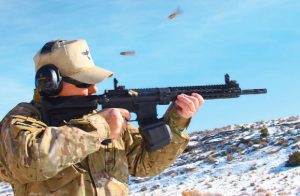
I took the sample QRB upper, attached it to a BCM lower and took it to the private 900-yard range belonging to Jim Carroll of Carroll Targets and home of the Ultimate Precision Shooting Rest in Montrose, Colorado.
Using this Ultimate Precision Shooting Rest with several brands of .223 ammunition, the QRB, equipped with a Leupold 3-10X42mm Mark 4 scope, produced five-shot groups of .72 to 1.23 inches from the rifle’s Voodoo match barrel.
While the BCM issue trigger is quite smooth, with an eight-pound let-off, a better aftermarket trigger would no doubt help improve accuracy even further, not to mention an upper receiver group with a heavy match barrel.
Using the QRB with multiple barrel groups would require only one upper receiver with the receiver plate mounted and as many barrel groups as desired each (with a barrel plate). No malfunctions occurred throughout more than 180 rounds, some of it full-auto with my M16 lower receiver group, and that brings us to another new product.
MAGPUL D-60
If you’re like me, you’ve been patiently awaiting the availability of the 60-round drum magazine from Magpul Industries. I received one just before shipping this report on the QRB. The D-60 is of Swiss-watch quality and surpassed all my expectations.
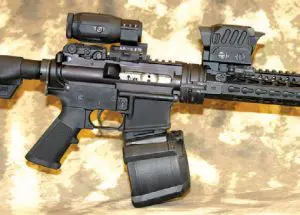
Using a finger-operated lever to depress the follower, the D-60 can be loaded singly or with a G.I. AR-15 charger guide and chargers. The D-60 can also be left loaded indefinitely without spring fatigue, and can be disassembled for cleaning if necessary. The D-60 has a window to count remaining rounds and, being the same length as a standard 30-round magazine, it al- lows prone shooting.
DI OPTICAL
While at SHOT Show 2016, I met my good friend Michael Beltran (who needs no introduction to spec-ops types) of DI Optical. Mike showed me DIO’s new military-grade optical sights, including the new DCL-30 red dot and the company’s 3XP Extender with its A.R.M.S. Tactical Integrated Tilt System (T.I.T.S.). This is the best such mount going, truly living up to its acronym! The new mil-spec 9,000-hour 1.5 MOA dot DCL-30 also virtually drips quality!
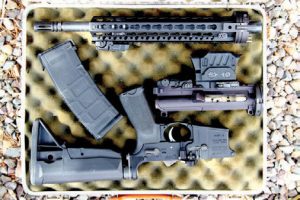
For those who want MOA accuracy from an SBR in a tiny container and that’s ready to use in seconds, Cry Havoc’s QRB is here. The QRB is equally at home on a heavy-barreled precision AR-15 rifle to be stowed in a short rifle case.
And remember, the police will always arrive in time to remove the body. To keep your QRB and the rest of your guns, join the NRA!
CRY HAVOC TACTICAL
(321) 537-2141 www.cryhavoctac.com
A.R.M.S. INC.
(508) 584-7816 www.armsmounts.com
BRAVO COMPANY MFG.<span class=”Apple-converted-space”>
(877) 272-8626 www.bravocompanymfg.com
DI OPTICAL
(714) 690-2971 www.diopticalusa.com
MAGPUL INDUSTRIES CORP.
(877) 4MAGPUL www.magpul.com
ULTIMATE PRECISION SHOOTING REST
(970) 240-8600 www.carrollstargets.com
